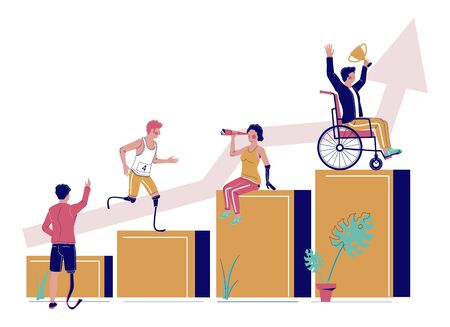Understanding Compassion Fatigue
Compassion fatigue is a term frequently encountered in healthcare and social service settings across the United States. It refers to the emotional, mental, and physical exhaustion that professionals experience after prolonged exposure to the suffering and needs of others. Unlike general burnout, which can result from workplace stress or excessive workload, compassion fatigue is specifically related to caring for people who are experiencing trauma, illness, or distress. This condition often manifests as a gradual decline in empathy, decreased job satisfaction, irritability, and a sense of helplessness or detachment. In American healthcare and social service environments—where practitioners routinely encounter high caseloads, emotionally charged situations, and systemic challenges—compassion fatigue has become increasingly prevalent. The nature of these professions demands continuous emotional investment, making it difficult for workers to maintain healthy boundaries between their personal well-being and their commitment to clients or patients. As a result, compassion fatigue is recognized as an occupational hazard that can undermine both professional effectiveness and personal health.
2. Signs and Symptoms to Watch For
Recognizing compassion fatigue early is critical for healthcare and social service professionals in the United States. The unique pressures of American care settings—high caseloads, administrative demands, and cultural expectations around empathy—can accelerate the onset of this condition. Compassion fatigue manifests through a combination of emotional, physical, and behavioral symptoms that can compromise both personal well-being and professional effectiveness.
Emotional Signs
Emotionally, compassion fatigue often shows up as persistent feelings of sadness, irritability, or anxiety. You may notice a reduced sense of accomplishment at work or experience emotional numbness when interacting with clients or patients. Professionals might also struggle with guilt for not doing “enough,” even when they are meeting all their responsibilities.
Physical Symptoms
The physical toll includes chronic exhaustion, headaches, sleep disturbances, and frequent illnesses due to a weakened immune response. In fast-paced American healthcare environments, these symptoms are sometimes dismissed as “just part of the job,” making them easy to overlook until they become severe.
Behavioral Indicators
Behaviorally, compassion fatigue can lead to increased absenteeism, withdrawal from colleagues or loved ones, and a decline in work performance. Some professionals may find themselves becoming cynical or detached from those they serve—a sign commonly referred to as “empathy burnout” in U.S. clinical discussions.
Quick Reference Table: Common Signs by Category
| Category | Common Signs (U.S. Context) |
|---|---|
| Emotional | Anxiety, sadness, irritability, emotional numbness, guilt over perceived inadequacy |
| Physical | Chronic fatigue, headaches, insomnia, frequent colds/illnesses |
| Behavioral | Absenteeism, withdrawal from coworkers/family, reduced productivity, cynicism |
Awareness of these signs is vital for early intervention. By identifying symptoms specific to the American care context, professionals can take proactive steps before compassion fatigue negatively impacts their career and personal life.

3. Causes and Contributing Factors
In the United States, compassion fatigue is a significant concern for professionals working in healthcare and social service environments. Several workplace and systemic factors contribute to this issue, often making it difficult for individuals to maintain emotional resilience over time.
Workload and Staffing Shortages
One of the primary causes is chronic understaffing and high patient or client loads. Healthcare providers and social workers are frequently expected to manage more cases than is reasonable, leading to extended shifts, overtime hours, and inadequate breaks. This constant pressure can quickly exhaust emotional reserves, especially when resources are limited.
Bureaucracy and Administrative Burdens
The U.S. healthcare system is known for its complex administrative requirements, including extensive documentation, insurance paperwork, and compliance protocols. These tasks often take time away from direct client care, increasing frustration and reducing opportunities for meaningful interactions. Over time, the disconnect between the desire to help and the reality of bureaucratic demands can erode job satisfaction and contribute to compassion fatigue.
Lack of Supportive Work Culture
A supportive work environment is critical for managing stress and preventing burnout. However, many healthcare and social service organizations in the U.S. do not prioritize employee well-being. There may be a lack of accessible mental health resources, insufficient training on self-care strategies, or a workplace culture that discourages discussing emotional challenges. This can leave professionals feeling isolated or stigmatized when they struggle with compassion fatigue.
Exposure to Trauma and High-Intensity Cases
Frontline workers often face repeated exposure to trauma, loss, and crisis situations—whether dealing with critically ill patients, survivors of abuse, or families in distress. Without proper debriefing or counseling opportunities, these experiences can accumulate and significantly impact emotional health.
Cultural Expectations and Stigma
American cultural values like individualism and self-reliance sometimes discourage professionals from seeking help when they feel overwhelmed. There can be an unspoken expectation to “tough it out,” which prevents early intervention and exacerbates compassion fatigue over time.
Understanding these workplace and systemic factors is essential for developing effective strategies to address compassion fatigue within U.S. healthcare and social service professions.
4. Impact on Professionals and Patient Care
Compassion fatigue in healthcare and social service professions has significant and far-reaching effects, not only on individual professionals but also on patient/client outcomes and the broader organizational culture. In American settings, where high demands and emotional labor are common, these impacts are particularly pronounced.
Consequences for Professionals
Healthcare workers, social workers, and other caregivers experiencing compassion fatigue may develop symptoms such as emotional exhaustion, reduced empathy, irritability, and a sense of detachment from their work. Over time, this can lead to increased absenteeism, higher turnover rates, and even clinical burnout. The table below outlines some typical consequences:
| Professional Consequence | Description | Example in U.S. Context |
|---|---|---|
| Emotional Exhaustion | Feeling drained and overwhelmed by constant exposure to others’ trauma | Nurses in busy ERs feeling unable to “switch off” after shifts |
| Reduced Empathy | Difficulty connecting emotionally with patients/clients | Social workers becoming detached during client interviews |
| Decreased Job Satisfaction | Losing passion or interest in the profession | Physicians contemplating career changes or early retirement |
| Increased Absenteeism/Turnover | Taking more sick days or leaving the job altogether | High turnover rates among home health aides in urban areas |
Impact on Patient/Client Outcomes
The quality of care delivered to patients and clients can decline when providers are affected by compassion fatigue. Common outcomes include:
- Poor Communication: Providers may be less attentive or responsive, leading to misunderstandings and dissatisfaction.
- Decreased Safety: Fatigued staff may be more prone to errors in medication administration or documentation.
- Inequitable Treatment: Some patients or clients may receive less attention or support based on provider fatigue levels.
- Lowered Trust: Patients/clients sensing disengagement may lose trust in their providers or institutions.
Effects on Organizational Culture
An organization’s culture can suffer when compassion fatigue is widespread. Team morale often declines, collaboration becomes strained, and there is an overall decrease in engagement with the institution’s mission. In the U.S., where healthcare and social service teams rely heavily on interdisciplinary cooperation, this cultural deterioration can undermine both employee retention and quality improvement initiatives.
The Ripple Effect: A Summary Table
| Affected Area | Main Effect of Compassion Fatigue | Cultural Outcome (U.S. Example) |
|---|---|---|
| Individual Professional | Burnout, lower performance, mental health struggles | More clinicians seeking Employee Assistance Programs (EAPs) |
| Patient/Client Care | Diminished quality of care and satisfaction scores | Lower HCAHPS scores impacting hospital funding/reputation |
| Organization as a Whole | Poor morale, high staff turnover, lack of innovation | Difficulties maintaining Magnet status or meeting Joint Commission standards |
The Need for Proactive Solutions
The cumulative effect of compassion fatigue underscores the necessity for American healthcare and social service organizations to recognize its signs early and implement effective interventions. Addressing compassion fatigue is not just about supporting individual well-being—it is vital for sustaining high-quality care delivery and a healthy workplace culture.
5. Strategies for Prevention and Self-Care
For healthcare and social service professionals in the United States, preventing compassion fatigue requires intentional strategies that address both individual and collective well-being. Building resilience and maintaining mental health are not just personal responsibilities—they are cultural imperatives supported by many American organizations.
Individual Approaches
1. Set Boundaries: U.S. work culture often values productivity, but it is essential to establish clear boundaries between professional and personal life. Take scheduled breaks, use vacation time, and avoid after-hours communication when possible.
2. Practice Mindfulness: Techniques such as meditation, deep breathing, or yoga can reduce stress and increase emotional awareness. Many hospitals and agencies now offer on-site mindfulness workshops or access to mindfulness apps.
3. Seek Professional Support: Don’t hesitate to reach out to Employee Assistance Programs (EAPs), counseling services, or peer support groups. These resources are widely available across healthcare systems and are confidential.
Collective Approaches
1. Promote Team Debriefings: Regular team check-ins and debriefings after challenging cases allow professionals to share experiences, validate emotions, and learn coping skills from peers.
2. Foster a Culture of Appreciation: In the American context, recognition programs—like employee of the month or shout-outs in meetings—help boost morale and reinforce a sense of purpose.
3. Advocate for Systemic Change: Encourage leadership to prioritize staff wellness by providing manageable caseloads, flexible scheduling, and access to wellness resources.
Culturally Relevant Self-Care Activities
Engage in activities that align with your identity and community—whether it’s participating in local volunteer opportunities, faith-based gatherings, or sports leagues. These connections can help maintain a healthy perspective outside of work.
Remember: Self-care Is Not Selfish
Pursuing prevention strategies is not only accepted but encouraged in the U.S. professional landscape. By prioritizing self-care and collective support, you enhance your ability to provide compassionate care for others while protecting your own well-being.
6. Resources and Seeking Support
Recognizing the impact of compassion fatigue is only the first step—actively seeking resources and support is crucial for sustained well-being in healthcare and social service professions. The United States offers a variety of organizations and support systems specifically designed to help professionals manage compassion fatigue, burnout, and secondary traumatic stress. Below is a list of key American-based resources:
National Organizations
- American Nurses Association (ANA): Offers mental health resources, self-care toolkits, and webinars on managing workplace stress and compassion fatigue.
- Substance Abuse and Mental Health Services Administration (SAMHSA): Provides a national helpline (1-800-662-HELP) and specialized resources on trauma-informed care and professional burnout prevention.
- National Alliance on Mental Illness (NAMI): Delivers educational programs, peer support groups, and crisis intervention services for healthcare workers facing emotional strain.
- The Compassion Fatigue Awareness Project: Dedicated to increasing awareness and providing practical tools, workshops, and resource lists for those experiencing compassion fatigue.
Peer Support Networks & Employee Assistance Programs (EAPs)
- Employee Assistance Programs (EAPs): Most hospitals and agencies offer confidential counseling, stress management workshops, and referrals to behavioral health professionals through EAPs.
- The Schwartz Center for Compassionate Healthcare: Promotes open dialogue about emotional challenges in care settings through Schwartz Rounds—a forum for staff to discuss the social and emotional aspects of their work.
- Professional Peer Support Groups: Many professional associations host local or virtual peer groups where members can share experiences and coping strategies in a confidential setting.
Online & Continuing Education Resources
- The American Psychological Association (APA): Features continuing education courses focused on self-care, trauma exposure response, and ethical practice for caregivers.
- Coursera & EdX: Offer online courses from U.S. universities such as “Psychological First Aid” by Johns Hopkins University, providing actionable strategies for managing stress in helping professions.
- Mental Health America (MHA): Provides webinars, articles, screening tools, and advocacy resources tailored to professional burnout prevention.
Crisis Support Hotlines
- Crisis Text Line: Text HOME to 741741 for free, 24/7 crisis counseling from trained volunteers.
- 988 Suicide & Crisis Lifeline: Dial 988 for immediate support during mental health crises—available nationwide for both professionals and the general public.
Taking Action Matters
If you or your colleagues are struggling with compassion fatigue, consider reaching out to these organizations or exploring peer support within your workplace. Proactive engagement with available resources not only fosters personal resilience but also strengthens the quality of care provided to those you serve.


